

 |
Search the Site with

|
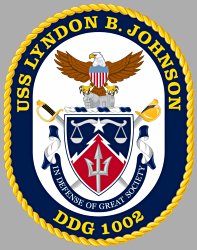 |  |
USS LYNDON B. JOHNSON will be the third and final ship in the ZUMWALT - class of guided missile destroyers. She's the frist ship in the Navy to bear the name. At a cost of more than $4 billion per unit, these ships were designed around their two Advanced Gun Systems (AGS) using Long Range Land Attack Projectile (LRLAP) ammunition. The problem: the AGS can only fire LRLAP ammunition and after the Navy's decision to build only three ZUMWALT-class ships, the cost for a single round of the new LRLAP went up to $800,000 to $1 million. As a consequence, the Navy halted its procurement of the LRLAP in November 2016, leaving the AGS unusable due to the lack of ammunition.
| General Characteristics: | Awarded: September 15, 2011 |
| Keel laid: January 30, 2017 | |
| Launched: December 9, 2018 | |
| Commissioned: | |
| Builder: Bath Iron Works, Bath, Maine | |
| Propulsion system: two Rolls-Royce Marine Trent-30 gas turbines, two Rolls-Royce RR4500 gas turbine generator sets | |
| Propellers: two | |
| Length: 600 feet (182.9 meters) | |
| Beam: 80.7 feet (24.6 meters) | |
| Draft: 27.6 feet (8.4 meters) | |
| Displacement: 14,564 tons | |
| Speed: 30+ knots | |
| Aircraft: two SH-60 helicopters or one MH-60 helicopter or three MQ-3 Fire Scout Drones | |
| Armament: 20 Mk-57 VLS modules (with four cells each), two 155mm Advanced Gun Systems, two Mk-46 30mm guns | |
| Crew: 175 including aviation detachment | |
| Homeport: |
Crew List:
This section contains the names of sailors who served aboard USS LYNDON B. JOHNSON. It is no official listing but contains the names of sailors who submitted their information.
About the Ship's Namesake:
A Texas congressman, Lyndon B. Johnson was the first member of Congress to enlist in the military following the start of World War II. After his naval service, Johnson was elected to the U.S. Senate in 1948, where he served as both minority and majority leader before being elected vice president Nov. 8, 1960.
Following President John F. Kennedy's assassination Nov. 22 1963, Johnson succeeded to the presidency, finished the remaining term, and was reelected for a full term as president, by the greatest percentage of total popular vote (61 percent) ever attained by a presidential candidate.
Johnson's time as president was marked by the passage of programs that greatly influenced and impacted education, healthcare and civil rights for generations to come. He signed the Civil Rights Act of 1964 into law, enacting comprehensive provisions protecting the right to vote and guarding against racial discrimination. His work on civil rights continued with the passage of the Voting Rights Act, which guaranteed voting rights for all people, regardless of race. Johnson signed legislation establishing Medicare, which allowed millions of elderly Americans access to cheaper medical services. He also launched the Head Start Program, which provided pre-school children from low-income families with classes, medical care, and other services.
As a naval officer, Johnson requested a combat assignment after the attack on Pearl Harbor and served in the Pacific theater during World War II. After returning from active duty service, Johnson reported back to Navy leaders and Congress on what he believed were deplorable conditions for the warfighters, and continued to fight for better standards for all military members.
USS LYNDON B. JOHNSON Image Gallery:
The photos below were taken by Michael Jenning and show the LYNDON B. JOHNSON under construction at Bath Iron Works in Maine on September 14, 2019.
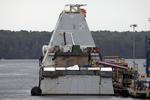 | 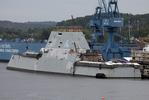 | 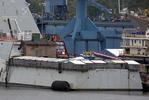 | 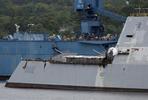 | 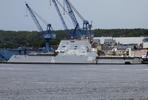 |
 Back to Destroyers list.
Back to Destroyers list.  Back to ships list.
Back to ships list.  Back to selection page.
Back to selection page.  Back to 1st page.
Back to 1st page.